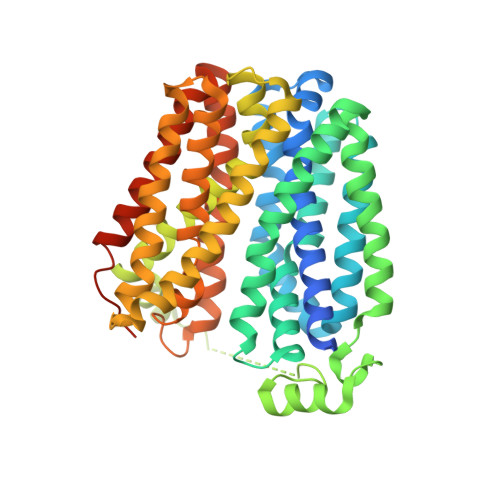Structures suggest a mechanism for energy coupling by a family of organic anion transporters.
Leano, J.B., Batarni, S., Eriksen, J., Juge, N., Pak, J.E., Kimura-Someya, T., Robles-Colmenares, Y., Moriyama, Y., Stroud, R.M., Edwards, R.H.(2019) PLoS Biol 17: e3000260-e3000260
- PubMed: 31083648
- DOI: https://doi.org/10.1371/journal.pbio.3000260
- Primary Citation of Related Structures:
6E9N, 6E9O - PubMed Abstract:
Members of the solute carrier 17 (SLC17) family use divergent mechanisms to concentrate organic anions. Membrane potential drives uptake of the principal excitatory neurotransmitter glutamate into synaptic vesicles, whereas closely related proteins use proton cotransport to drive efflux from the lysosome. To delineate the divergent features of ionic coupling by the SLC17 family, we determined the structure of Escherichia coli D-galactonate/H+ symporter D-galactonate transporter (DgoT) in 2 states: one open to the cytoplasmic side and the other open to the periplasmic side with substrate bound. The structures suggest a mechanism that couples H+ flux to substrate recognition. A transition in the role of H+ from flux coupling to allostery may confer regulation by trafficking to and from the plasma membrane.
- Department of Biochemistry & Biophysics, University of California San Francisco School of Medicine, San Francisco, California, United States of America.
Organizational Affiliation:


















